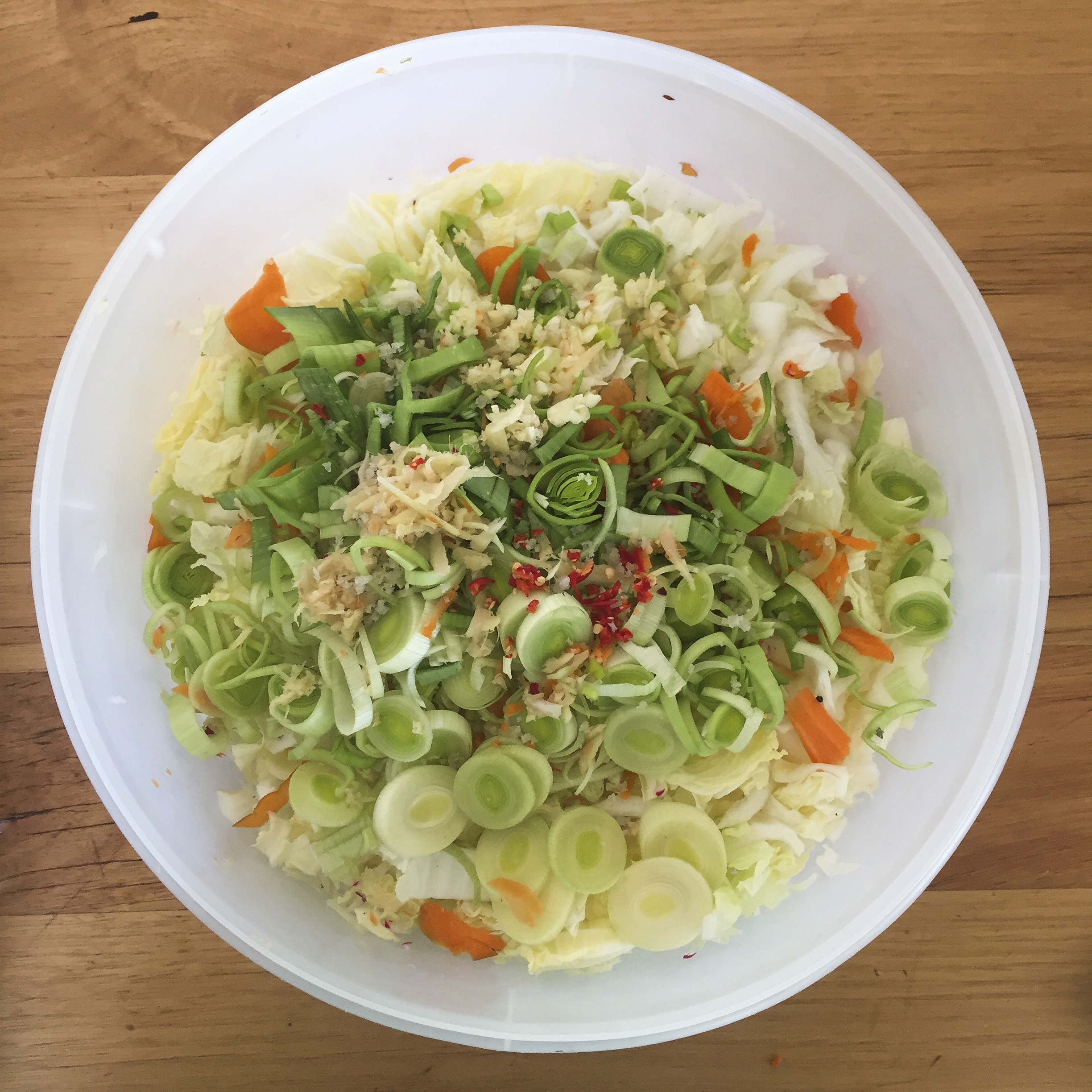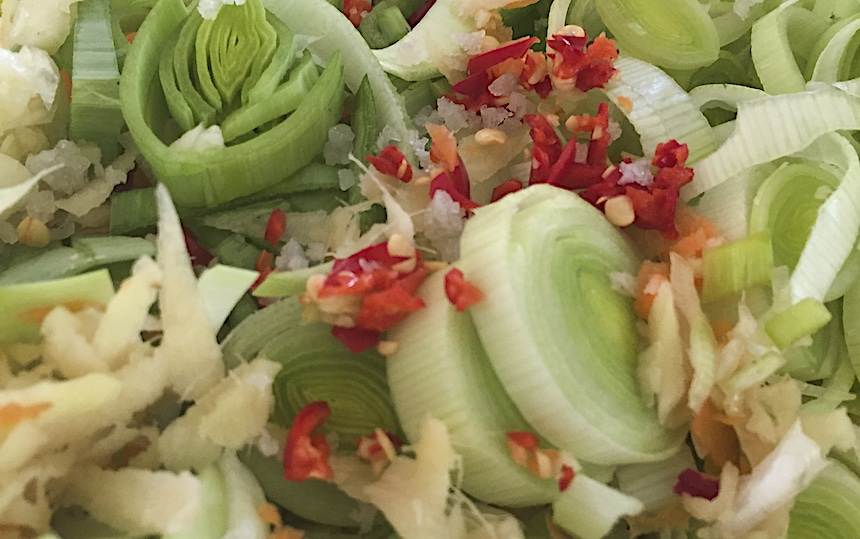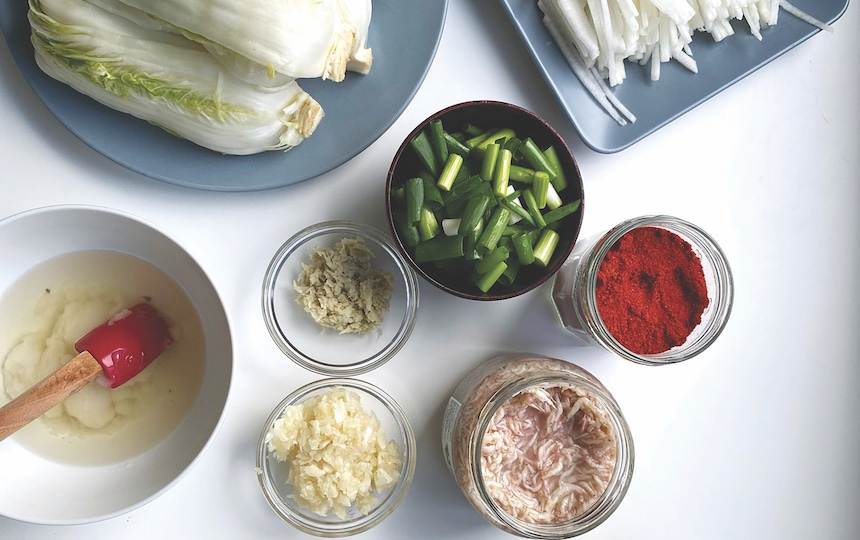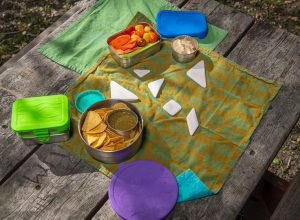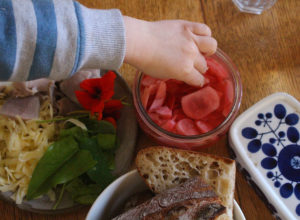We love fresh, zingy kimchi here at Pip HQ, and this recipe hits the spot! (It’s also very handy when you’re overrun with wombok!) This is our favourite recipe from Emily Stokes at Fermaculture Farm.
Kimchi Recipe
Ingredients:
- 1 head of wombok cabbage or medium cabbage
- 1 daikon radish or a few red radishes
- 1 carrot
- 1 or 2 onions or leeks or green onions
- 2 tablespoons of freshly grated ginger
- 2 or 3 cloves of garlic
- 2 or 3 fresh chillies
- 1 tablespoon of sea salt
Method:
Coarsely chop or grate the vegetables. Chop garlic and chillies. Add everything into a bowl or clean food grade bucket.
Pound with a rolling pin or other pounder to release juices. If you are using a wombok cabbage they are quite soft and do not require much pounding.
Place in a jar and press down firmly with wooden pounder until juices cover the top of the vegetables. The top of the vegetables should be around 2cm below the top of the jar (otherwise the juices will bubble out onto your benchtop).
Leave your kimchi at room temperature, and taste after two or three days. If you are happy with the flavour you can move to cold storage (ie. cellar or fridge) or leave it to ferment longer at room temperature. Your kraut will develop different flavours over time.
(Recipe adapted from Wild Fermentation).
When to use your ferments
Lacto-fermented foods have traditionally been served as a condiment, not a main meal, so a little can go a long way. Little and often is a great way to consume your ferments. Here are some tips:
If you have a small amount of vegetable ferment and a fermented drink with every meal, you’ll be doing your gut flora a favour.
If you are a meat eater, ferments are especially good to help your body digest meat (sausages go very well with sauerkraut!).
Add some juice from your ferments (ie. the liquid in your sauerkraut) into your bowl of soup for a lacto-kick.
Add a spoon of fermented vegetables to your salad.
If you heat your ferments, you will lose the probiotic quality, so add them to your meal once it has cooled enough to put in your mouth.
Tips for kids and ferments
- Start young so your kids will get used to the sour taste. Kids can be given small amounts of ferments as soon as they are old enough to eat solids.
- Kombucha and water kefir are delicious, fizzy, probiotic drinks that often appeal to kids.
- If your kids eat savoury mince (ie. bolognaise sauce) or some type of lentil stew, you can mix in a small amount of finely chopped vege ferment, or even some sauerkraut juice.
- If your kids like chips and dip, add some type of ferment to your dip, and blend till smooth (ie. milk kefir and avocado, or roasted capsium dip with fermented tomato salsa).
- Make smoothies with milk kefir, a wonderfully probiotic healing food. If you add ripe bananas, cinnamon, honey, berries and the like, kids enjoy the flavour.
- Ginger carrots is a great fermented food to try for those not used to the sour taste. It is lovely with scrambled eggs in the morning
- Keep offering ferments, even if they are not being eaten. Some kids will take longer to come around to the sour flavour, especially if they are older. It helps if they see their parents eating ferments with every meal. My kids love sauerkraut, especially when there are big chunks of crunchy cabbage in there. However, there will be times when they don’t feel like eating it. I always put a little serve on their plate.
What to know more about kimchi?
In Issue #19 of Pip Magazine, we delve into the history of kimchi, the health benefits of this wonder food and bring you some delicious kimchi recipes to try.
We also provide an in-depth table which outlines each of the names, types and groupings of key tomato varieties, what they look like, and what they are/are not good for.
Grab your copy of Issue #19 of Pip here.

